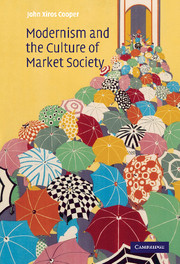Introduction The modernist avant-garde and the culture of market society
Published online by Cambridge University Press: 22 September 2009
Summary
In New York in 1921, Man Ray made a short film of the Baroness Elsa von Freytag-Loringhoven, then forty, shaving her pubic hair. It was shot during the short-lived period of New York Dada and it had art written all over it. Exhibited exclusively to other New York bohémiens, mainly in the Walter and Louise Arensberg circle, it was a typical product of the hothouse culture of early modernism. The luminous starkness of the woman's careworn, but strangely vibrant, body affronted not only conventional morality, but also the conventional aesthetic academicism of, say, Adolph-William Bouguereau's blushing, heavily fleshed but weightless, nudes. At that time, Bouguereau's gravity-defying females appealed particularly to prosperous bankers and business tycoons.
Although Man Ray's film is about a not-very-glamorous and aging woman shaving her pubic hair, it is also, and perhaps more importantly, about defining the space between avant-garde culture and ordinary society, what Andreas Huyssens calls the Great Divide between the avant-garde and mass society. In 1921, that distance was still visible. By the end of the twentieth century, it had almost entirely disappeared. Today Dada and ordinary life have more or less converged. Just look around you.
- Type
- Chapter
- Information
- Modernism and the Culture of Market Society , pp. 1 - 34Publisher: Cambridge University PressPrint publication year: 2004



